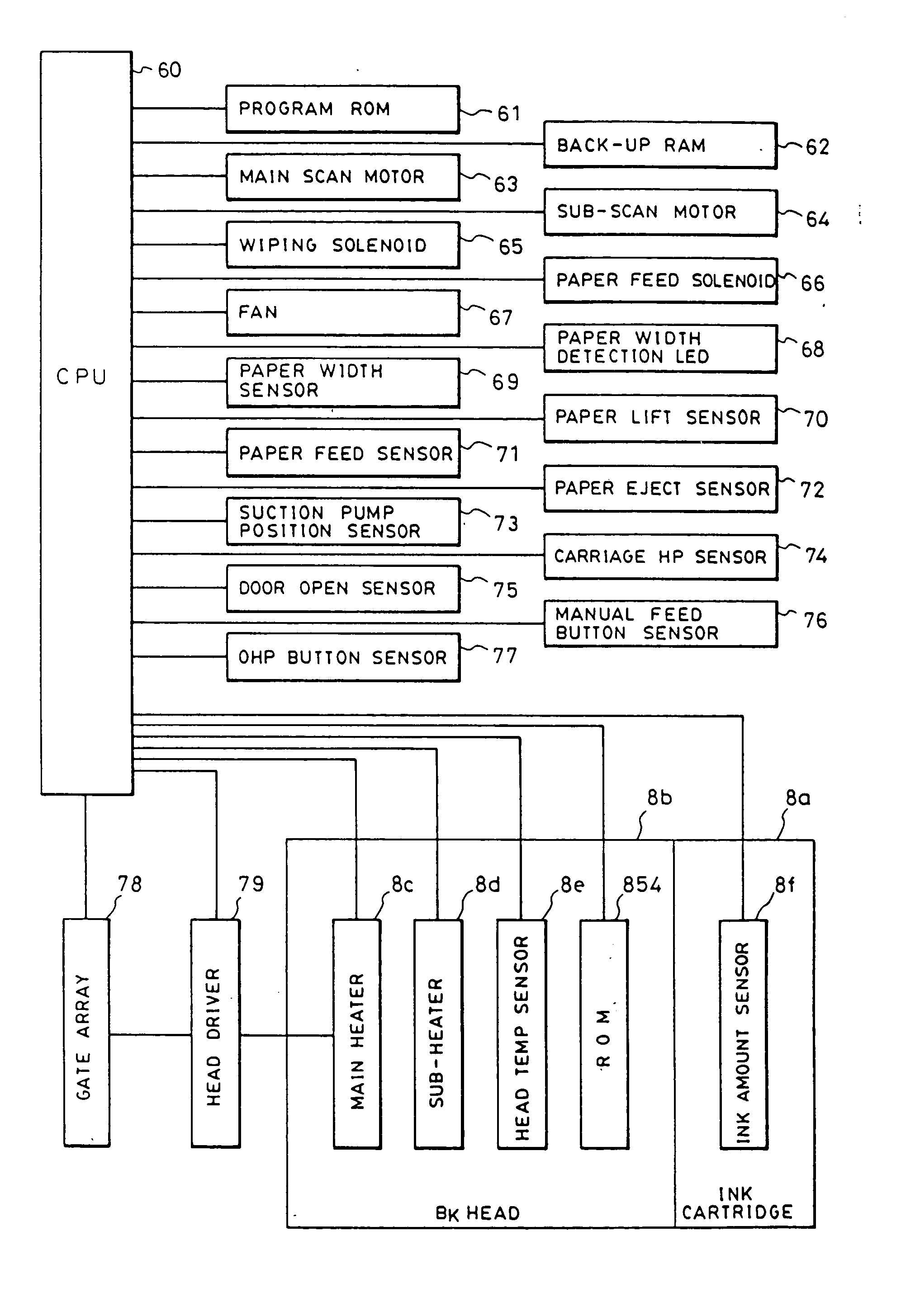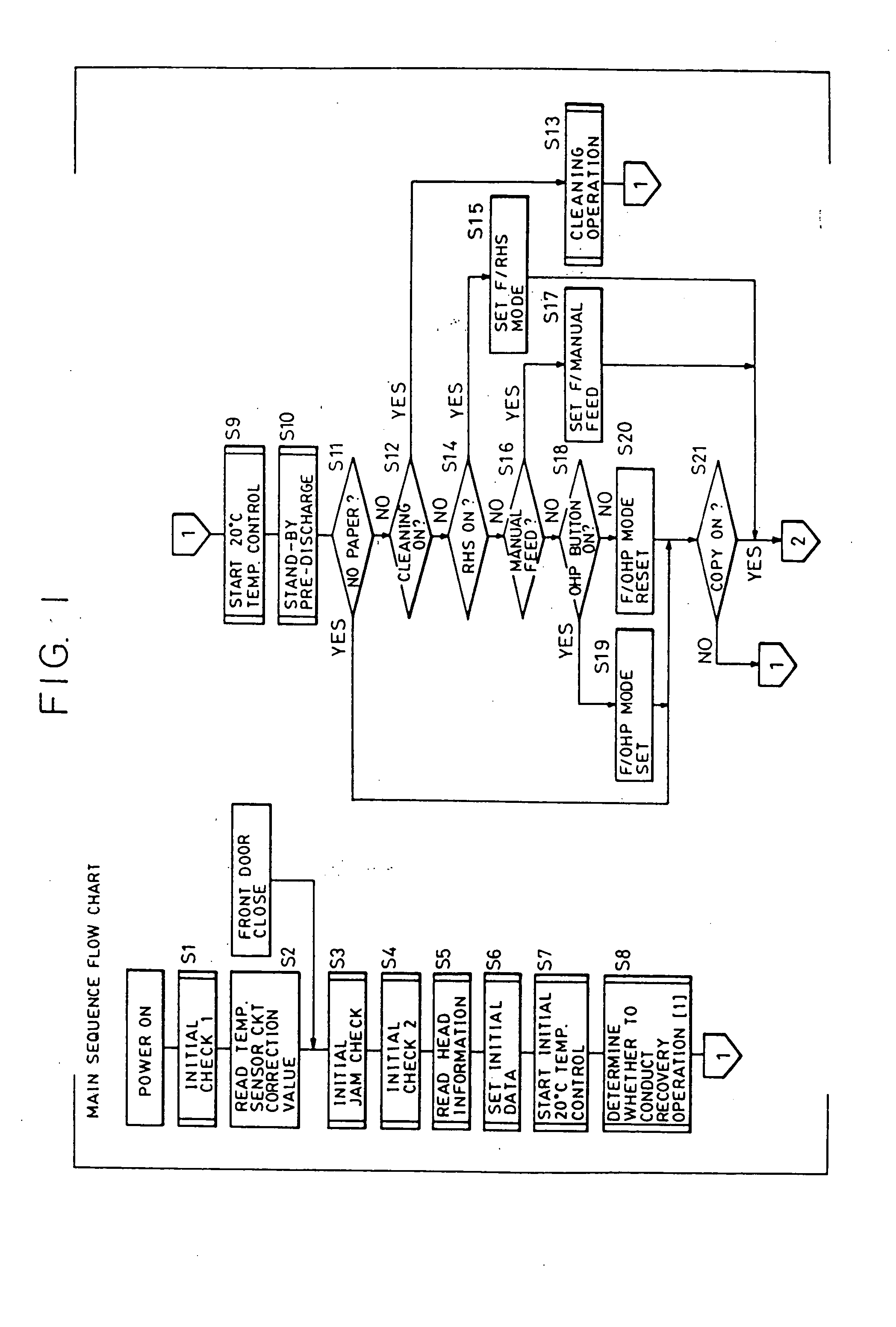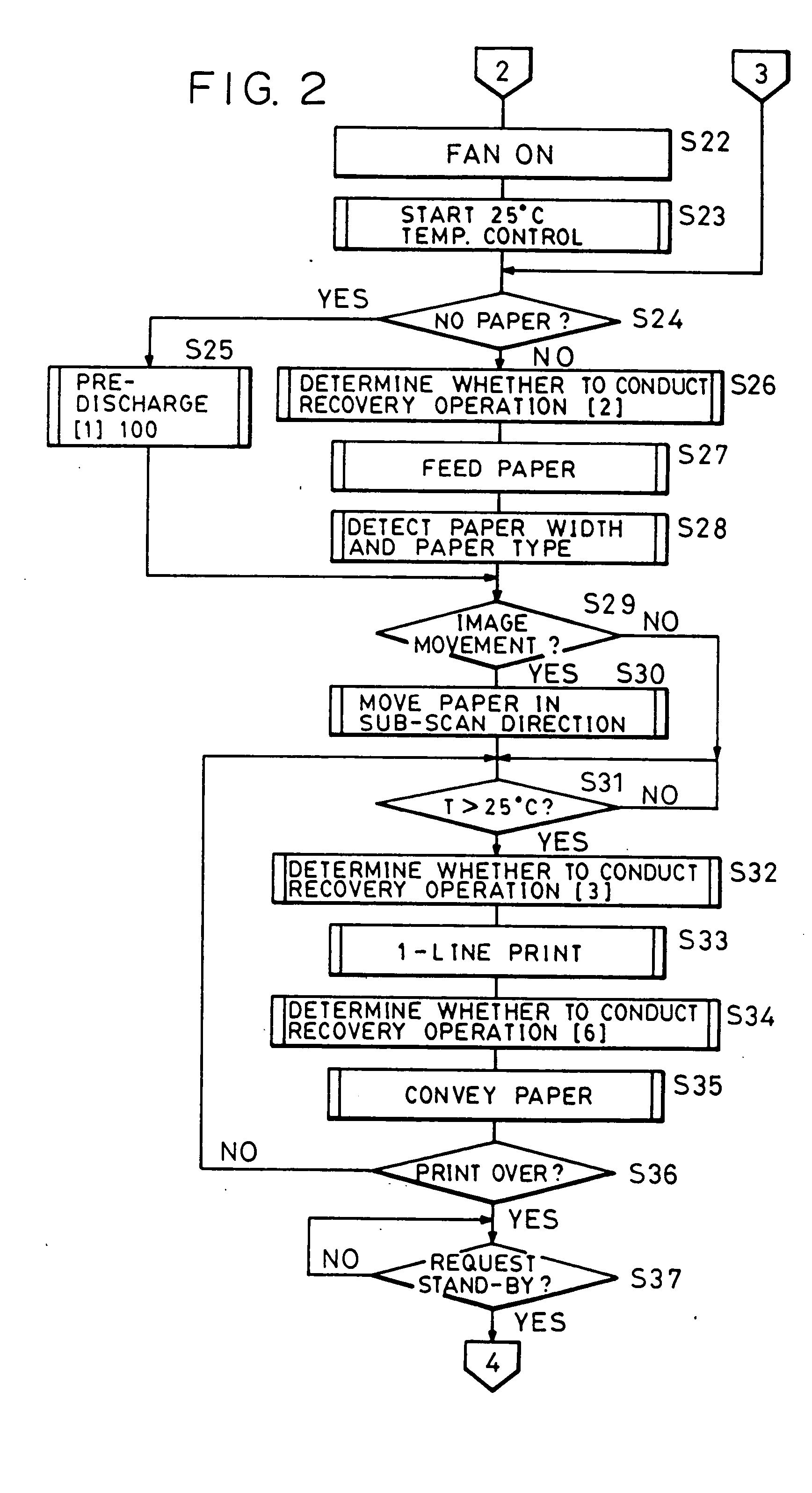Ink jet recording apparatus and method using replaceable recording heads
a recording apparatus and recording head technology, applied in the direction of inking apparatus, power drive mechanism, printing, etc., can solve the problems of uneven recording density, inability to adjust the recording speed, etc., to achieve the effect of facilitating optimization of recording
- Summary
- Abstract
- Description
- Claims
- Application Information
AI Technical Summary
Benefits of technology
Problems solved by technology
Method used
Image
Examples
second embodiment
[0317] A second embodiment of the present invention will be described below with reference to the accompanying drawings. This embodiment is intended to eliminate the waste of ink in the head which is not newly mounted due to pre-discharge in an apparatus having a plurality of heads. This is achieved by making the time pre-discharge is performed on-the newly mounted head different from that for the head which is not newly mounted. Other structure of this embodiment is the same as that of the first embodiment, a description thereof being omitted.
[0318]FIG. 81 is a flowchart showing the new cartridge suction recovery routine executed in this embodiment in detail. In this routine, 2000 and 6000 are respectively set as the numbers of times pre-discharge is conducted on the central portion and end portions of a new head, while 100 and 300 are respectively set as the numbers of times pre-discharge is conducted on the central portion and end portions of a head which is not newly supplied. ...
third embodiment
[0322] A third embodiment of the present invention will now be described with reference to the accompanying drawings. The third embodiment is characterized by the data stored in the ROM of the head and its storage format. FIG. 83 illustrates the format of the data stored in the ROM, and FIG. 84 illustrates the contents of the data. In this embodiment, EEPROM is used as the ROM.
[0323] In the EEPROM, manufacture No., uneven density correction data, ink color data and characteristics (classification) of a temperature sensor, i.e., a diode sensor, are written. In this embodiment, a EEPROM of 1 K bits (128 bytes) is used. Since the number of nozzles is 128, there are 128 different types of uneven density correction data. Each of the 128 uneven density correction data is 6-bit data and is selected from 64 types of data correction tables from 0 to 63. The address of the EEPROM corresponds to that nozzle no. The lower 6 bits of each address represent density correction table no. of that no...
fourth embodiment
[0325] A fourth embodiment of the present invention will be described with reference to FIG. 86. In FIG. 86, reference numeral 8 denotes a head (recording means) which can be replaced with a new one when it runs out of ink or breaks. A ROM 854 for storing various head data similar to the data stored in the previous embodiment is incorporated in the head 8. A CPU 60a reads out the data in the ROM 854 and writes it in a backup RAM 62 to perform control using that data. The backup RAM 62 is backed up by a battery so that the data stored in the backup RAM 62 does not disappear when the apparatus is switched off. Alternatively, a non-volatile memory, such as a EEPROM, may be used.
[0326] A door opening sensor 75 determines whether or not the door is opened by the user. The user opens the door when he removes the paper remaining in the apparatus or changes the head. A power resetting IC 80 releases a reset state of the system including the CPU 60a when the voltage reaches a predetermined ...
PUM
 Login to View More
Login to View More Abstract
Description
Claims
Application Information
 Login to View More
Login to View More - R&D
- Intellectual Property
- Life Sciences
- Materials
- Tech Scout
- Unparalleled Data Quality
- Higher Quality Content
- 60% Fewer Hallucinations
Browse by: Latest US Patents, China's latest patents, Technical Efficacy Thesaurus, Application Domain, Technology Topic, Popular Technical Reports.
© 2025 PatSnap. All rights reserved.Legal|Privacy policy|Modern Slavery Act Transparency Statement|Sitemap|About US| Contact US: help@patsnap.com



